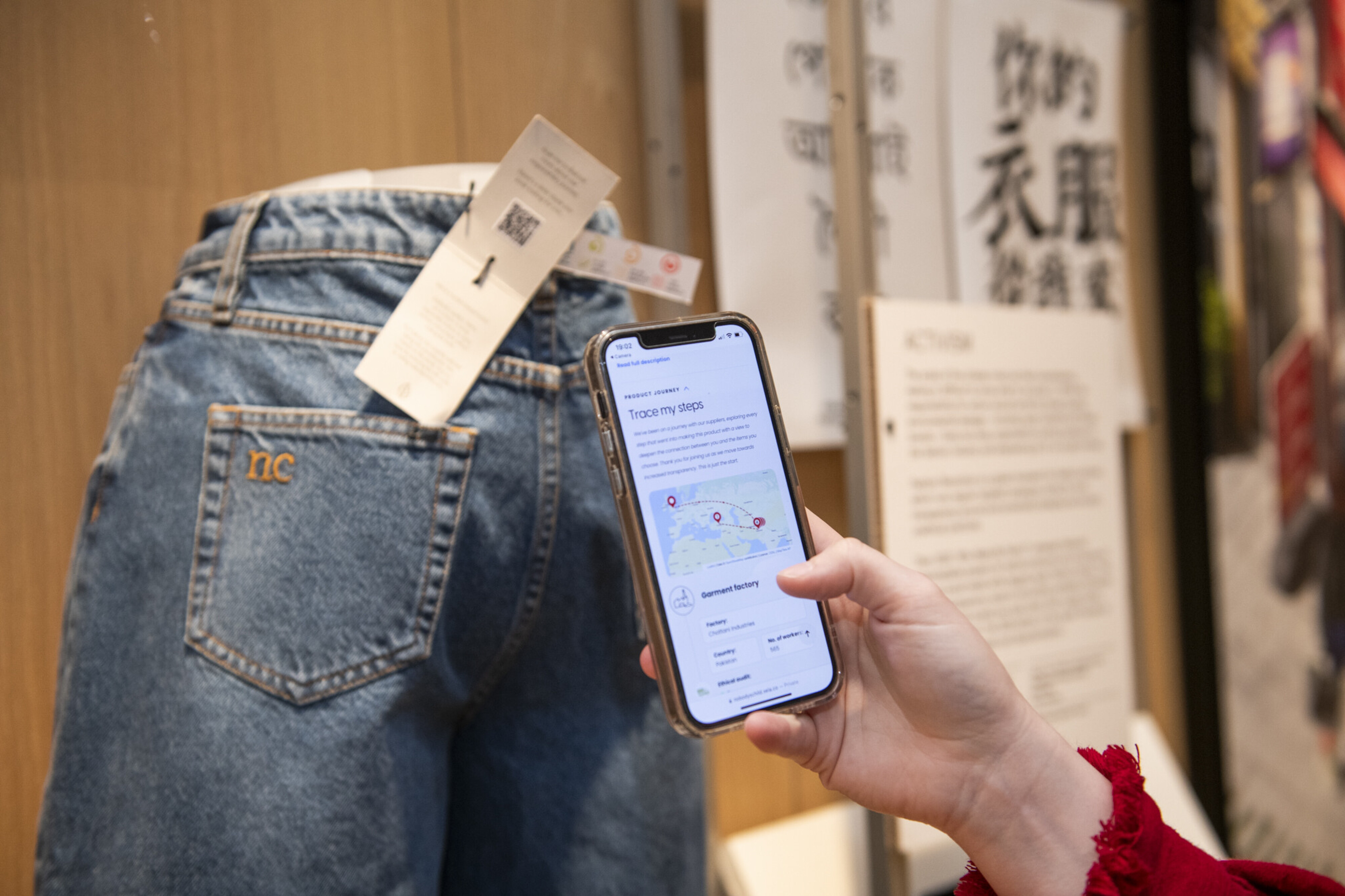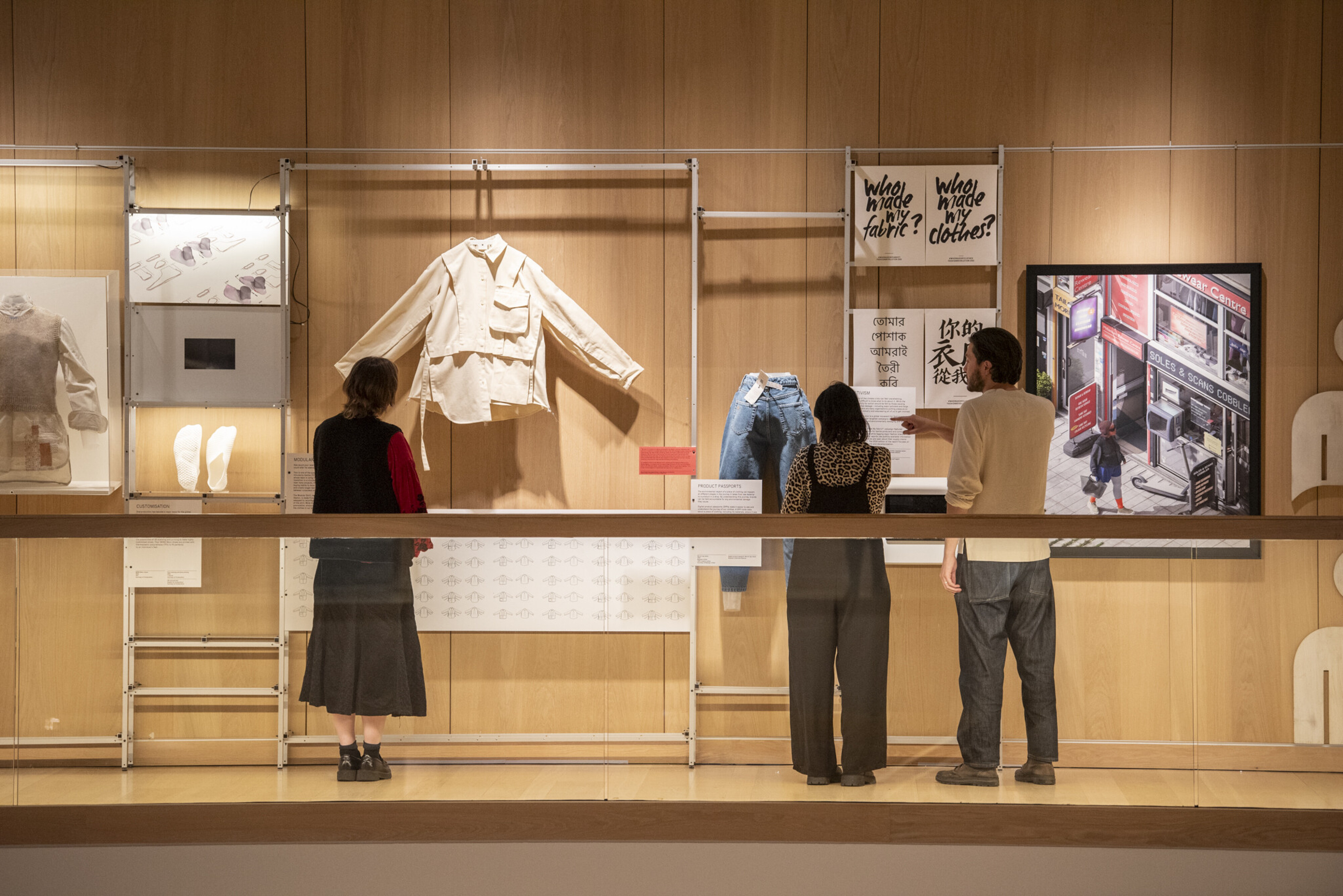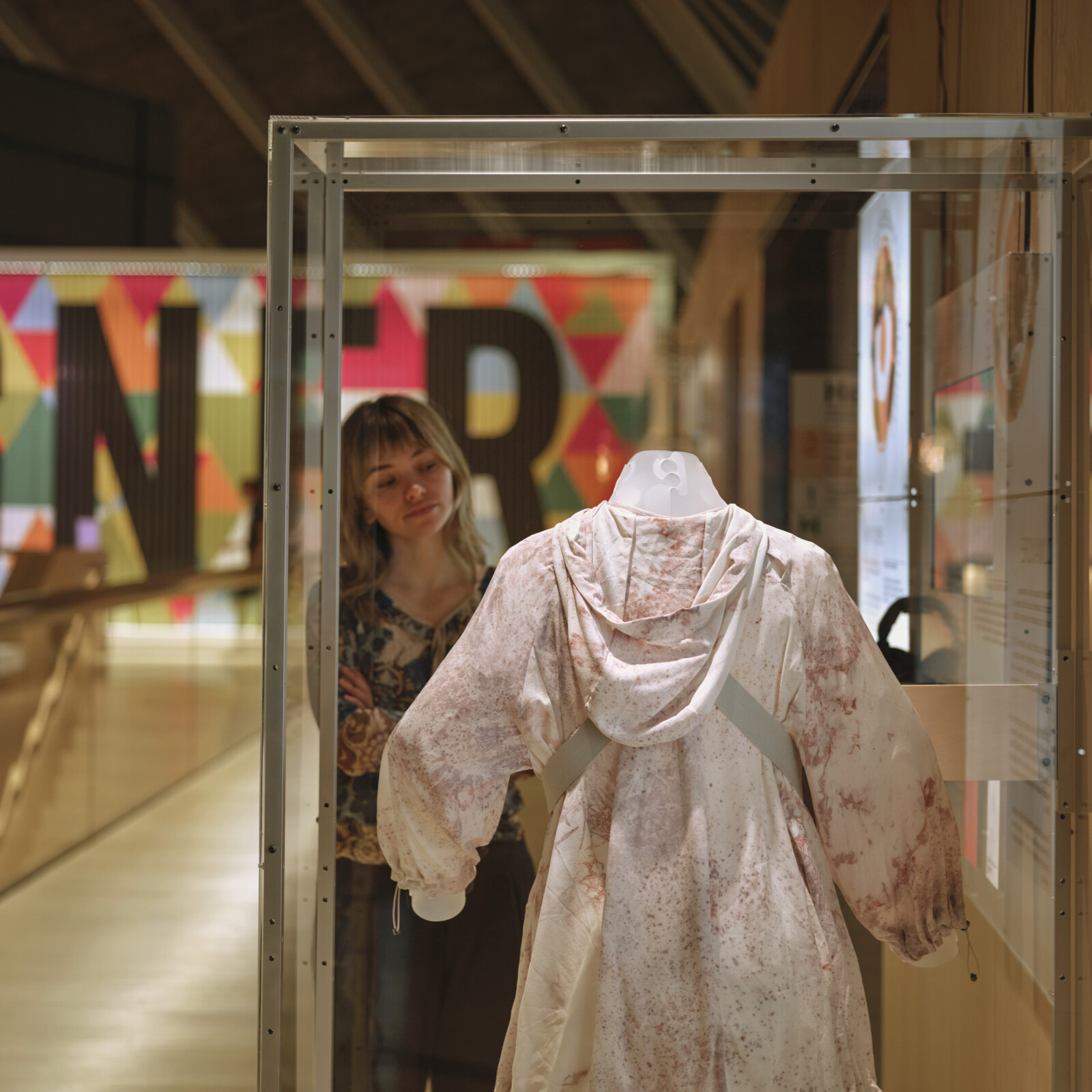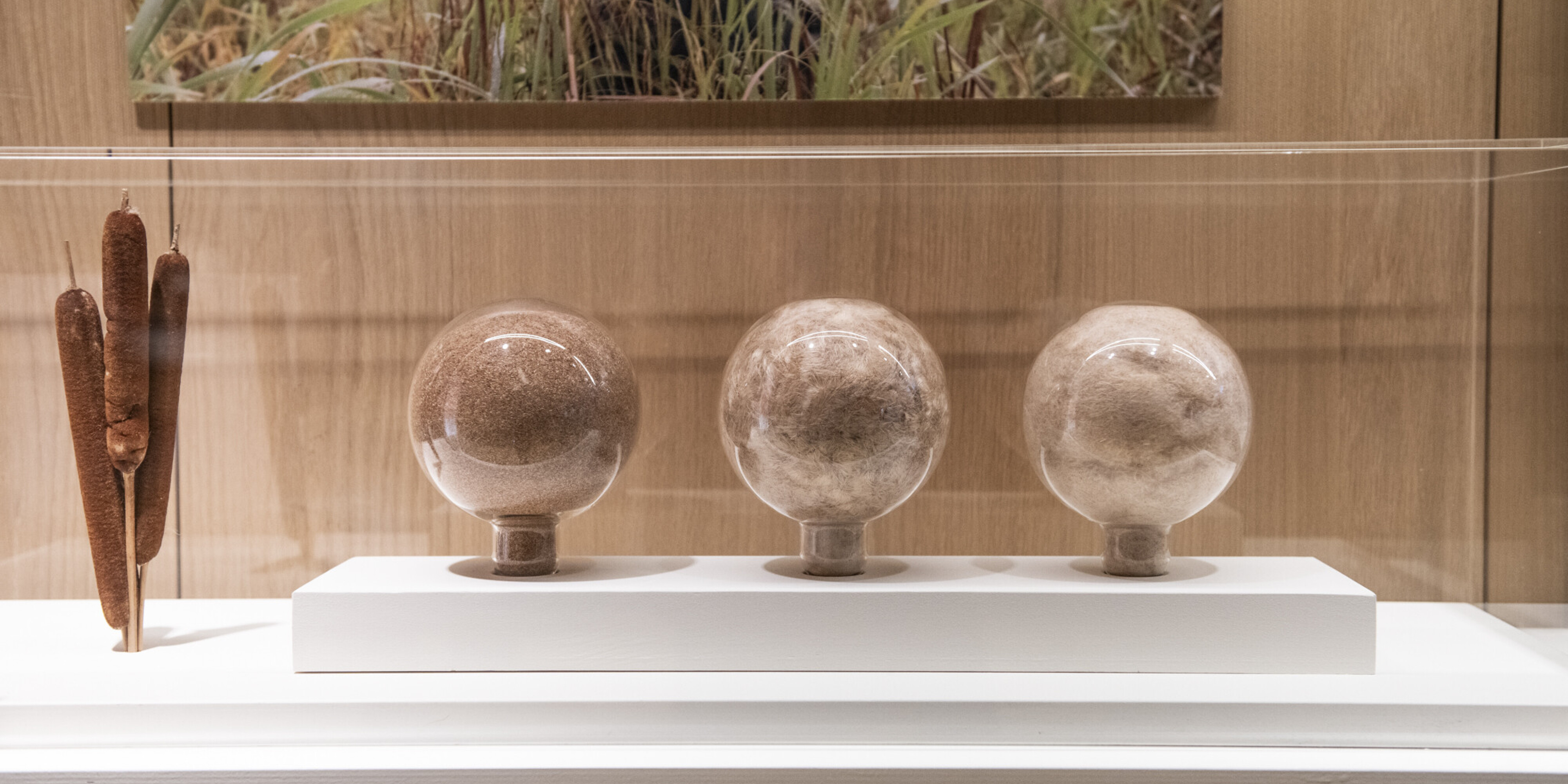
What is the future of fashion at a time of climate crisis?
Discover the urgent research and innovation taking place to design a future for fashion that is both stylish and sustainable.
Tomorrow's Wardrobe brings together a diversity of designers from across the fashion industry who are revolutionising the way we create, make, and wear clothes – including Stella McCartney, Ponda, Ahluwalia, Salomon, Ranra, Phoebe English and Vivobarefoot.
The fashion and textile industry is one of the most environmentally damaging design fields at work today. The footprint of our wardrobes extends from textile production in farms and factories to the design process in fashion houses. Though a significant driver of the UK economy, the impact of fashion is felt across the world in the form of material waste, ecological degradation, water pollution, exploitative working conditions and overproduction: annual garment production has doubled since 2000 and is expected to have increased by 60% in 2030.
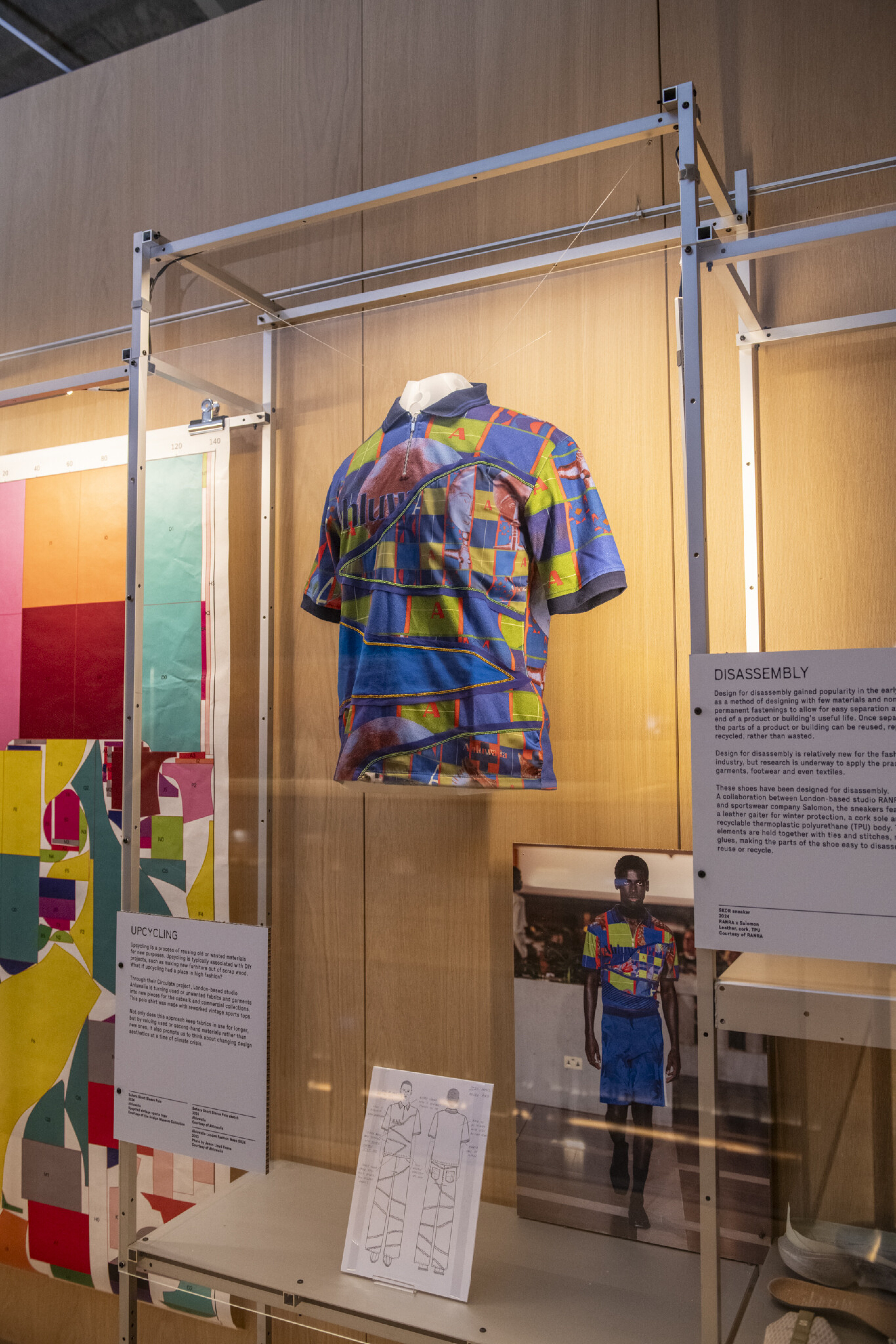
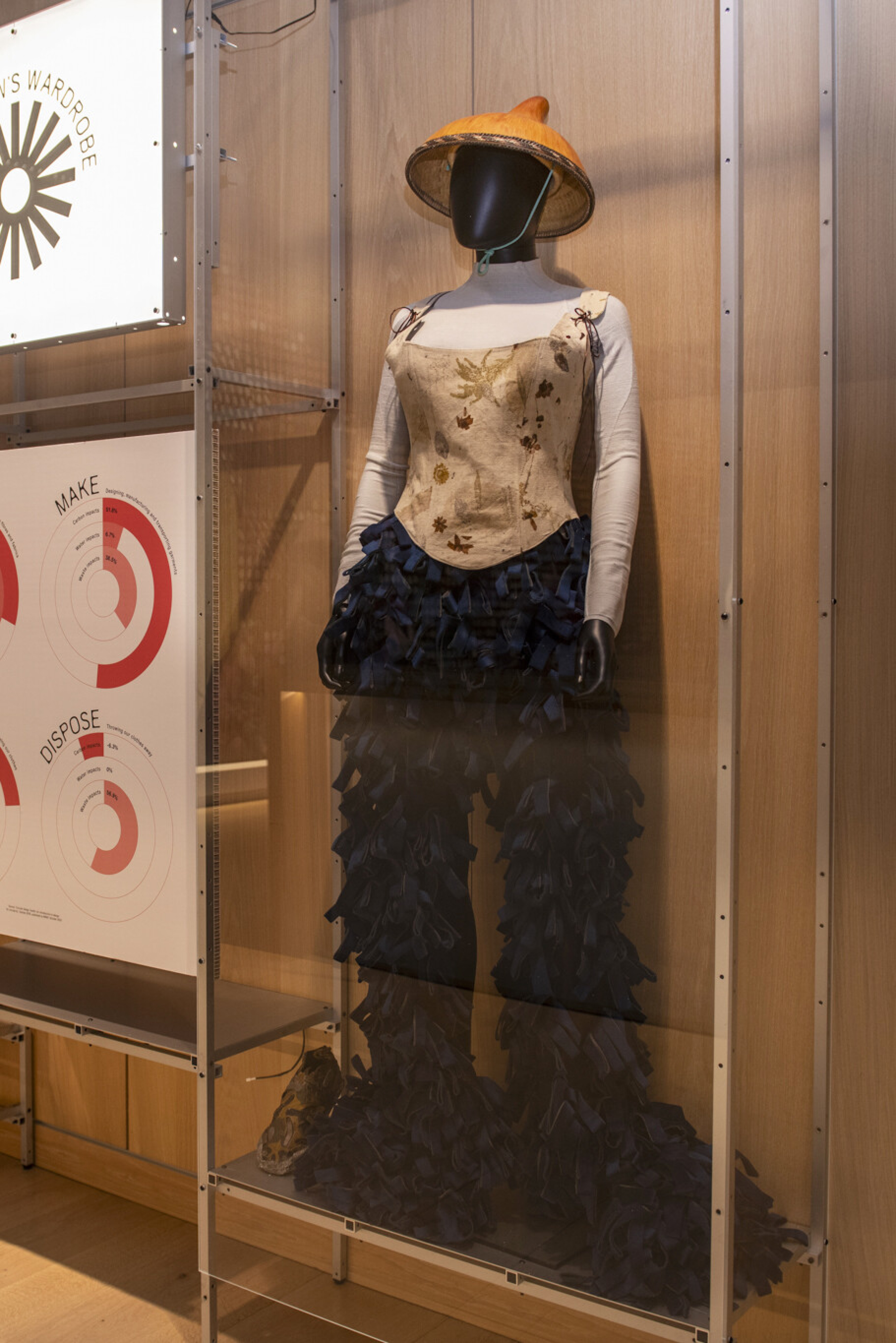
Tomorrow’s Wardrobe showcases the urgent research and innovation taking place across the UK to rethink how the world of fashion works. Moving from fabric landscapes to design studios to individual garments, the display presents a future built from both high-tech and low-tech tools: sewing machines, robotic arms, artificial intelligence, digital ids, upcycling, recycling and more.
Commissions
Tomorrow’s Wardrobe features commissioned works which bring together researchers and designers to share emerging research into fashion and textiles with the Design Museum audiences. Each section of the display concludes with a large-scale illustration by Max Guther, produced through an in-depth series of workshops in collaboration with design researchers Kate Goldsworthy, Susan Postlethwaite and Alex Pollmann. The illustrations depict scenes from the future of the fashion industry. Learn more on this page.
The display opens with an interactive work by researcher Laetitia Forst produced in collaboration with graphic design studio ACRE, which allows visitors to explore the lifecycles of different popular garments. Visitors can access the tool online at the museum or remotely at GarmentLifecycleMap.com. Learn more on this page.
The display also features an outfit curated and styled by Isabelle Landicho of the Earth Issue, a creative agency with a focus on environmental activism. The outfit features garments by emerging designers including EA Williams, SKIN SERIES, Lizandro Acera and Olaniyi Studio.
Textile Landscapes
The first section of the display looks at resurfacing industries of textile production in the UK. From Northern Ireland to Jersey, manufacturers are experimenting with alternative production methods and new materials for clothing in ways that both shorten supply chains and regenerate landscapes.
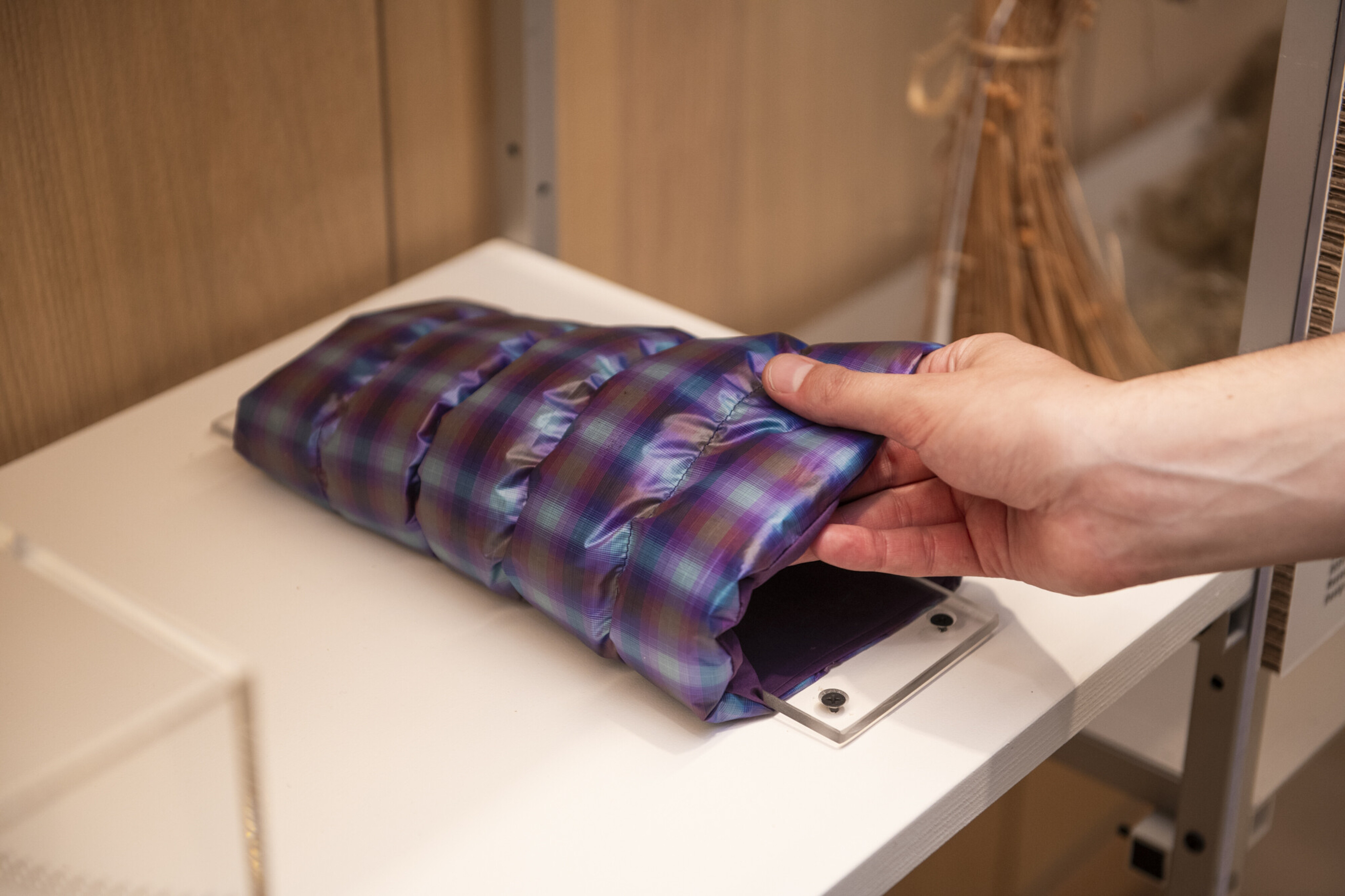
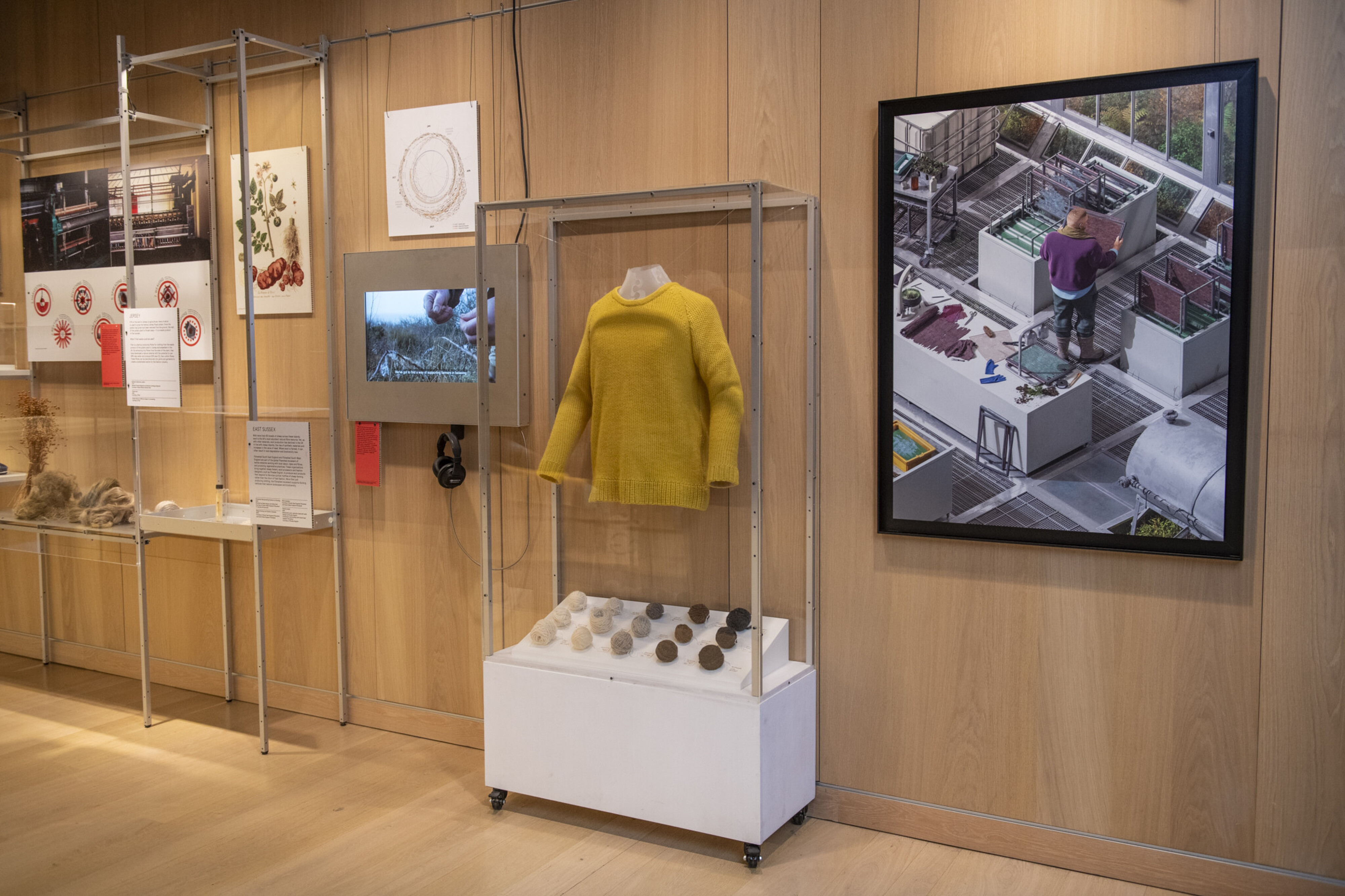
In the Studio
The second section zooms into the studio as a site for experimentation. Visitors will be able to explore a range of methods designers are using to reduce the environmental impact of the clothes they design. The works on display consider the potential of new tools such as artificial intelligence and digital design as well as new approaches to garment construction and material choices to make recycling easier.

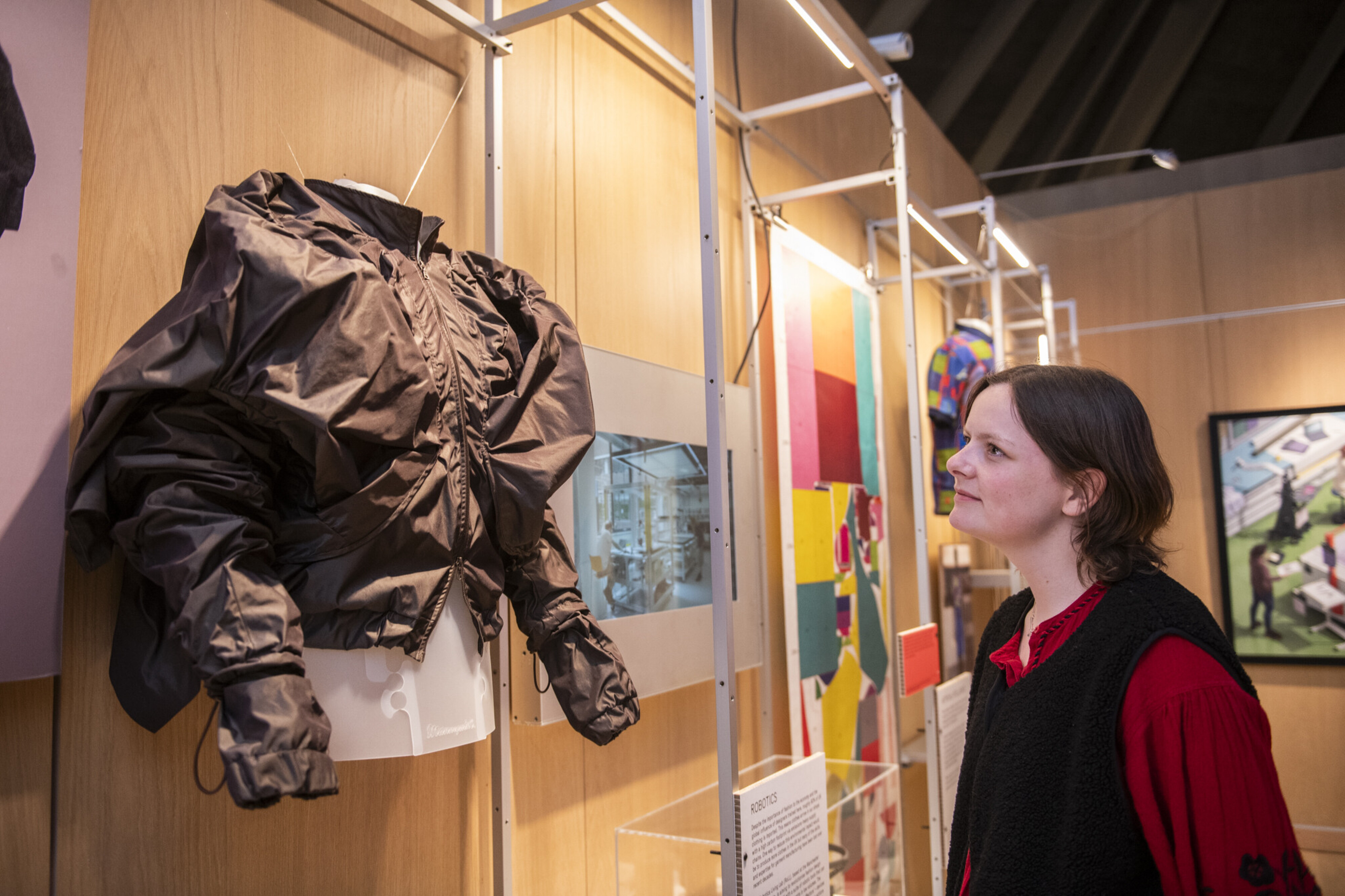
Your Wardrobe
In shaping tomorrow’s wardrobe for a better future for the planet, we – the wearers – can also have a role in reshaping the fashion industry. The final section presents how new research is changing the way we consume, care for and wear our own clothes.
